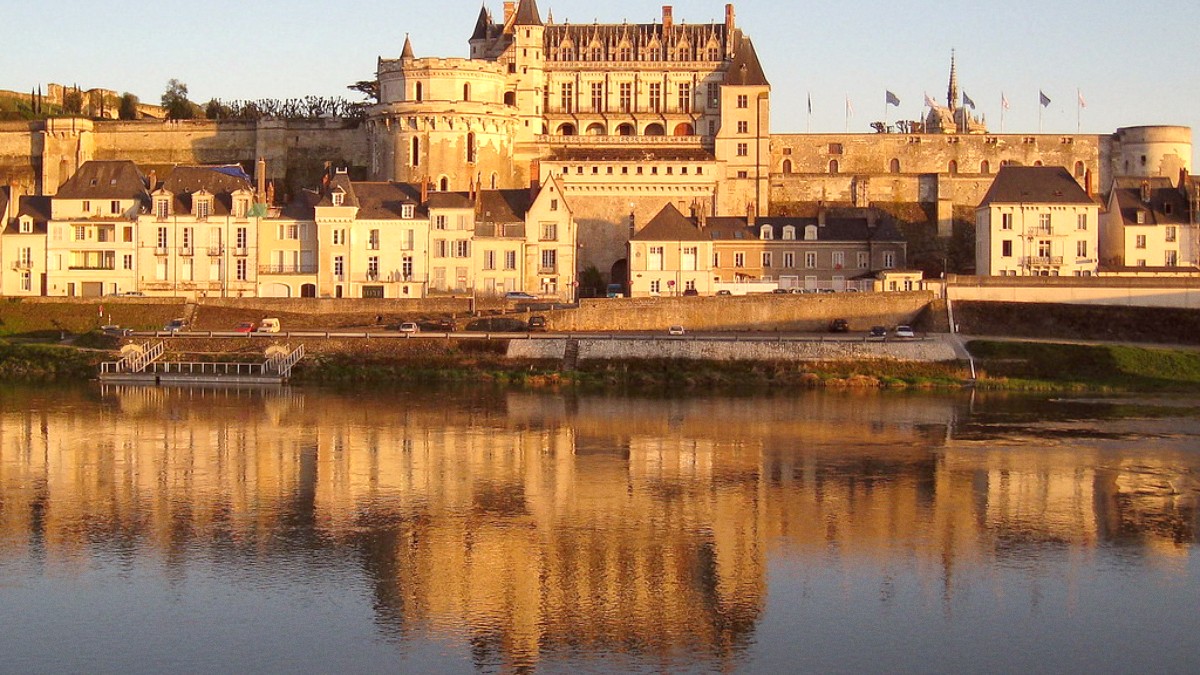
The Loire, France
The "Garden of France" nickname highlights the region's fertility. The Loire River and its tributaries create rich alluvial plains, ideal for growing a wide variety of fruits, vegetables, and grapes.
The Loire Valley, as a favored residence of French kings during the Renaissance, saw royal courts bring together chefs, produce, and culinary techniques, elevating the local cuisine. The focus was on quality ingredients and refined, yet often hearty, dishes.
French meal times are generally fixed. Lunch typically from 12:00 PM to 2:00 PM. Dinner usually from 7:00 PM to 10:00 PM. Many restaurants close between lunch and dinner service.
Bread is always served with meals, often placed directly on the table. It is for soaking up sauces or eating alongside your meal. You can ask for tap water ("une carafe d'eau, s'il vous plaît") which is free and perfectly acceptable.
Service is included in prices, but a small extra tip for good service is appreciated but not mandatory. Keep your hands visible on the table (not in your lap). Do not cut salad with a knife; fold larger leaves with your fork. Wait until everyone at the table has their food before you start eating.
A coarse, savory pâté made from shredded pork slowly cooked in its own fat until tender. Often served cold as a spread on fresh baguette. A rich and flavorful regional staple.
A classic upside-down apple tart with caramelized apples and a buttery crust. It is said to have originated in the Loire Valley. A comforting dessert.
Sainte-Maure de Touraine (a log-shaped cheese with a straw) and Valençay (a pyramid-shaped cheese). Usually served on a cheese board, in salads, or baked on toast.
Bakeries (boulangeries) and pastry shops (pâtisseries) offer excellent grab-and-go options: sandwiches (classic jambon-beurre), quiches, croissants, pain au chocolat. Crêpes are often available from dedicated stands. Local markets also offer prepared foods for picnics.
Wine: The Loire Valley is a major wine-producing region with Vouvray, Chinon & Bourgueil, and Touraine-Amboise. Rosé is light and refreshing. Kir Royal is a classic aperitif. Poiré (pear cider) is naturally sparkling. Coffee and Tisanes (herbal teas) are widely available.
Beyond simply dining, Amboise and the Loire Valley offer various experiences to deepen your appreciation for French gastronomy.
Some local chefs, gîtes, or specialized cooking schools in the region offer hands-on classes focusing on traditional Loire Valley cuisine.
Many vineyards and wine cellars (caves) around Amboise (especially in Vouvray or Montlouis-sur-Loire) offer cellar tours and wine tastings.
The region hosts various seasonal markets and local festivals celebrating specific produce.
A unique experience is dining in a restaurant carved into the tufa stone caves. These often specialize in local dishes, sometimes cooked in ovens built directly into the cave walls.
Provides a cool ambiance in summer and warmth in winter. Found outside Amboise, near Rochecorbon or Chinon.
Some château hotels (like Château de Pray) offer high-end dining experiences within their historic settings.
This provides a memorable meal.
Use basic French phrases when ordering food. 'Bonjour', 'S'il vous plaît', 'Merci' are appreciated.
Inform staff about allergies. 'Sans gluten' (gluten-free). Consider carrying a small card explaining needs. Pack snacks if sensitivities are severe.
Many restaurants close between lunch and dinner. Do not expect full-service meals outside these hours. Bakeries and cafes might offer lighter fare all day.
Keep hands visible on the table. Do not cut salad with a knife; fold leaves with your fork. Wait until everyone has food before eating.
Becoming more common in tourist areas. Traditional French dishes are often meat or fish-based. Look for salads, omelets, vegetable tarts, or side dishes. Many restaurants can adapt dishes upon request.
Learn basic phrases: "Je suis végétarien(ne)" (I am vegetarian), "Je suis végétalien(ne)" (I am vegan), "Sans viande" (without meat). Use apps like HappyCow.
Inform restaurant staff about allergies. Use "Sans gluten" (without gluten) or "Je suis allergique à...". Awareness is growing, but not all establishments have extensive knowledge of specific allergies or cross-contamination risks. Fine dining restaurants are usually more accommodating.
Consider carrying a small card explaining your dietary needs in French. Pack some Gluten-free snacks if you have severe sensitivities.
Very limited in Amboise. For Halal or Kosher options, major cities like Paris will offer more choices.
Spring: Look for dishes featuring fresh asparagus and strawberries. Autumn: The season for wild mushrooms, game meats, and fresh grapes from the harvest.
While traditional French cuisine is often meat or fish-based, vegetarian options are becoming more common in tourist areas. Look for salads, omelets, vegetable tarts, or side dishes. Many restaurants can adapt dishes upon request.
Inform restaurant staff about your allergies or dietary restrictions when ordering. While awareness is growing, not all establishments have extensive knowledge of cross-contamination risks. Fine dining restaurants are usually more accommodating.
Availability is very limited in Amboise. For these options, major cities like Paris will offer more choices, typically in specific neighborhoods with larger Muslim or Jewish communities.
Dining in a restaurant carved into the tufa stone caves is an unique experience. These often specialize in local dishes, sometimes cooked in ovens built directly into the cave walls.
They provide a cool ambiance in summer and warmth in winter.
Some château hotels (like Château de Pray) offer high-end dining experiences within their historic settings.
This provides a memorable meal.
Spring brings fresh asparagus and strawberries. Autumn is the season for wild mushrooms, game meats, and fresh grapes from the harvest. These seasonal changes dictate local menus.
French meal times are generally fixed. Restaurants often close between lunch and dinner. Request tap water ("une carafe d'eau") as it is free and standard. Tipping is optional, as service is included.
Do not hesitate to use basic French phrases when ordering food. A simple "Bonjour," "S'il vous plaît," and "Merci" shows respect and is always appreciated by locals.
Always ask for tap water ("une carafe d'eau") instead of bottled water if you prefer to conserve resources. It is perfectly acceptable and free.